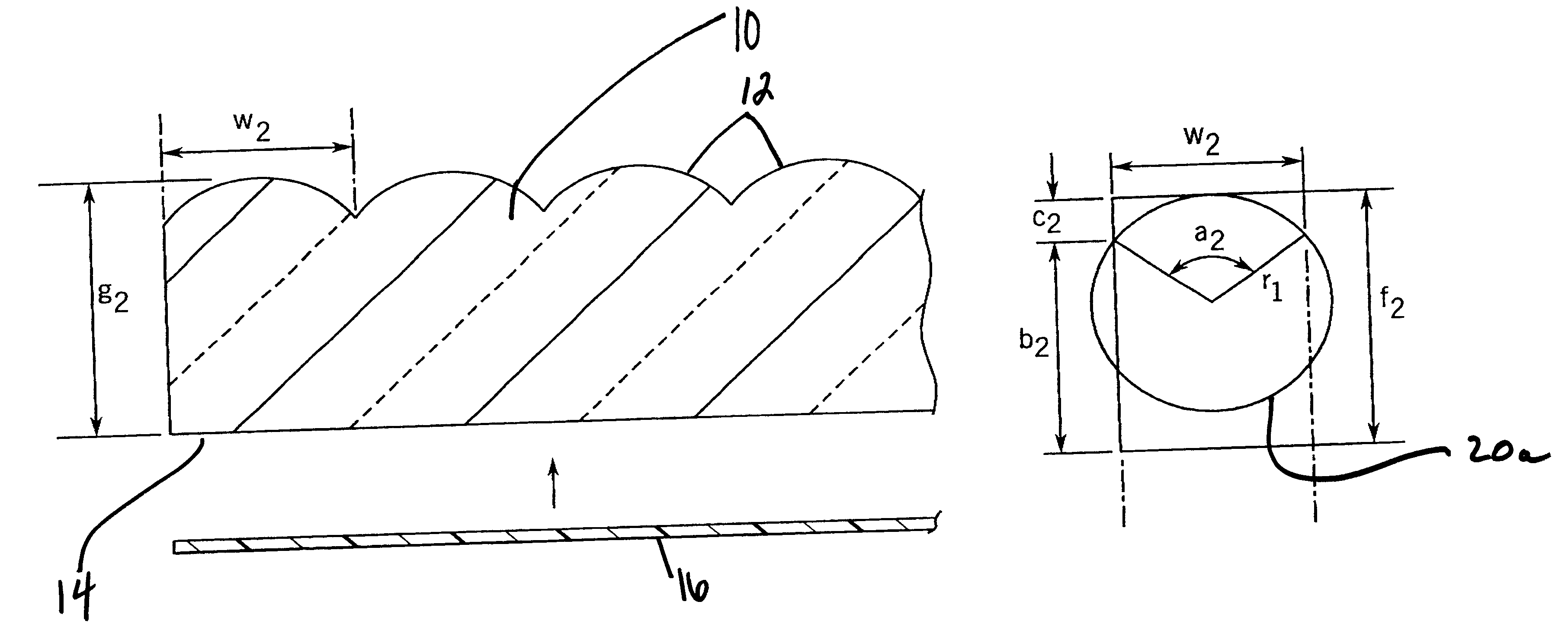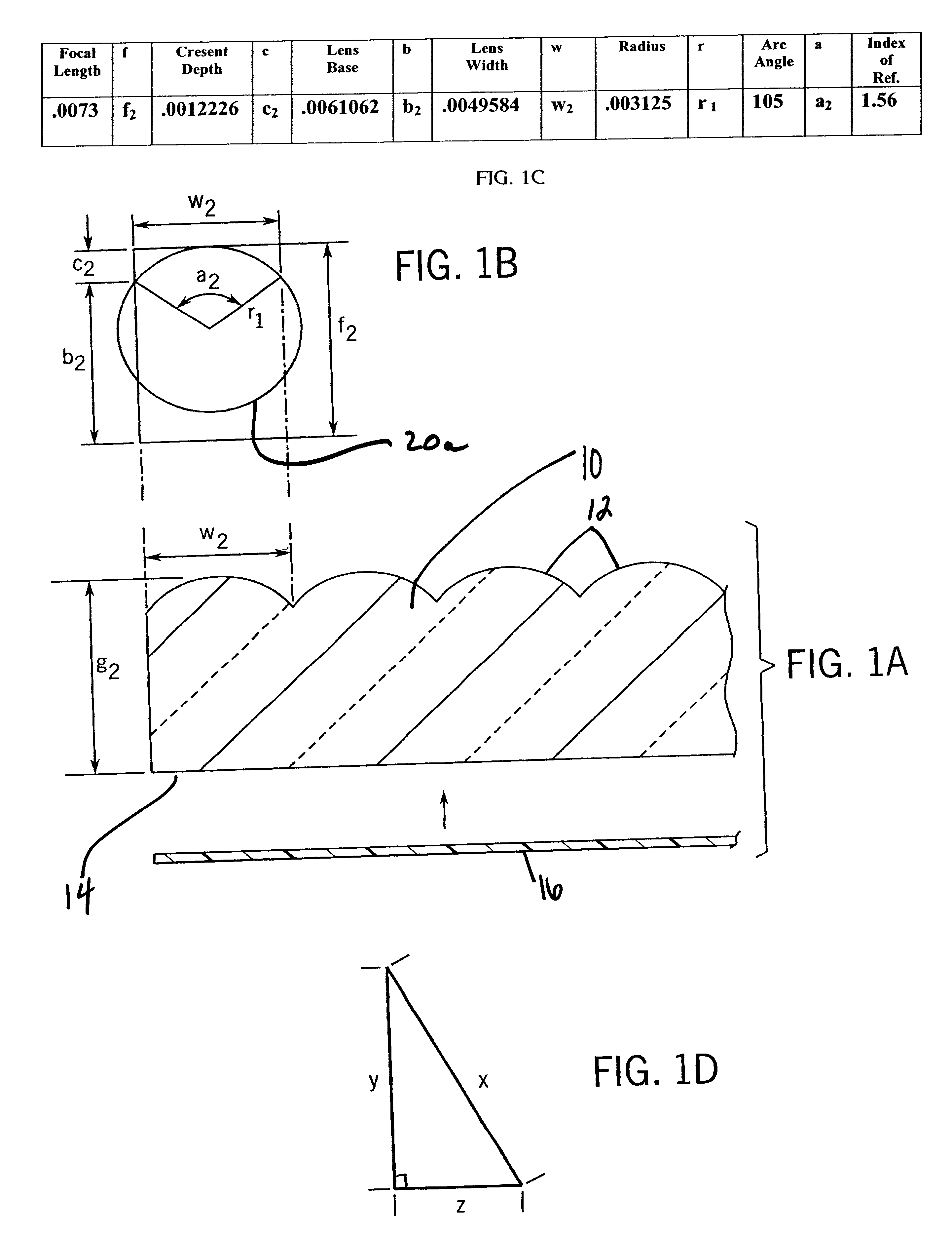High definition lenticular lens
a lenticular lens, high-definition technology, applied in the field of lenticular lenses, can solve the problems of affecting the optical properties of images, requiring the extra, often costly step of joining two layers to one another, and requiring lamination, etc., and achieving the effect of reducing the number of lenticular lenses
- Summary
- Abstract
- Description
- Claims
- Application Information
AI Technical Summary
Problems solved by technology
Method used
Image
Examples
Embodiment Construction
To design a particular high definition lens, certain of the lens parameters are typically set or predetermined (such as radius, arc length, or index of refraction). For example, it may be desirable to make a high definition lenticular lens having approximately 200 lines per inch (or a lens width of about 0.00495 inches). Additionally, another such parameter, index of refraction, may be predetermined by the type of raw material used to make a lenticular lens. Therefore, if desired, one can pick a particular lenticular material type, for example, a thermoplastic. As described above, each material has an index of refraction. One exemplary thermoplastic index of refraction 1.56. Next, a particular manufacturing process is determined, for example extrusion, casting, embossing, and the like.
In lenticular manufacturing, as noted above, a tool having a radius is used to impart the lenticular or ribbed pattern to form the lenticular lens. As a practical matter, the tool radius equals or subs...
PUM
 Login to View More
Login to View More Abstract
Description
Claims
Application Information
 Login to View More
Login to View More - R&D
- Intellectual Property
- Life Sciences
- Materials
- Tech Scout
- Unparalleled Data Quality
- Higher Quality Content
- 60% Fewer Hallucinations
Browse by: Latest US Patents, China's latest patents, Technical Efficacy Thesaurus, Application Domain, Technology Topic, Popular Technical Reports.
© 2025 PatSnap. All rights reserved.Legal|Privacy policy|Modern Slavery Act Transparency Statement|Sitemap|About US| Contact US: help@patsnap.com



